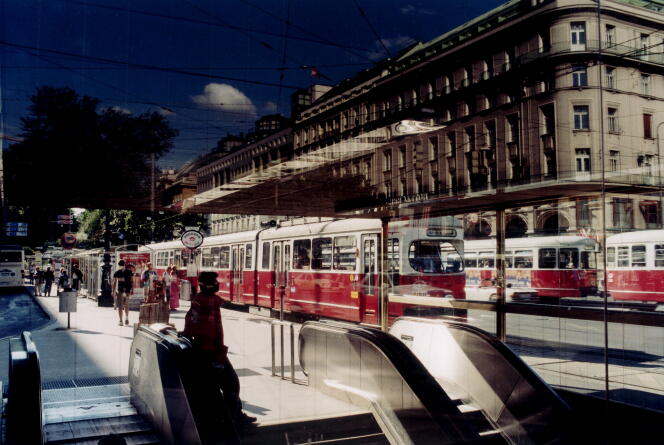


You go to 19 Berggasse as if you were on a pilgrimage. Sigmund Freud lived here for almost half a century before fleeing to London in 1938, threatened by the Nazis. This is where psychoanalysis was born, and where the first patients were seen for analysis. They were often members of Viennese high society who climbed a flight of stairs before ringing the right-hand doorbell, taking off their coats and waiting in the antechamber. It's a massive, sculpted, posh building, as you'd find in this neighborhood north of the Ring, populated at the time by doctors, civil servants and aristocrats. Converted into a museum in 1971, renovated and enlarged in 2020, Freud's apartment receives 130,000 visitors a year, "more and more often young people," said director Monika Pessler.
She conceived the space as one of absence. The void is the one left by totalitarianism, devastating the culture and inventiveness of a city that was home to so many exceptional minds. Absent, in fact, are Freud's couch and most of the furniture exiled with the professor and his family to Maresfield Gardens, in what is now London's Freud Museum. In Vienna, only the waiting-room bench, a pedestal table and two armchairs immerse visitors in the atmosphere of a psychoanalyst's practice.
Much like in analysis, a revelation emerges from a detail, an object gives birth to a world: the pair of glasses to be refurbished, forgotten at the opticians in 1938; an Art Nouveau ashtray on the sideboard in the entrance hall; or a chip on the multicolored glass that explains the absence of a coat hook on the wall (it must have banged every time the window was opened). This is the heart of the original setting, the matrix of revolutionary work. Documents, books and photographs complete the tour. Black-and-white films by Marie Bonaparte, a close friend of Freud's, show him in the countryside. They prove that in summer, outside Vienna, the serious-looking professor also took pleasure in relaxing. In the museum store, you can buy souvenirs: a young Freud on a mug, a Freudian beret and hat or a "Neurosis" sponge.
In addition, many signs of the life of the inventor of the "ego," "id" and "superego" are scattered around the Austrian capital. Freud was first and foremost a neurologist, so he deserves a place in the Museum of the History of Medicine. The Josephinum Academy, founded in 1785 by Joseph II, boasts an incredible collection of écorchés (figures drawn, painted or sculpted showing the muscles of the body without skin). At the time, dissection of the dead was prohibited. That is not for the faint-hearted, but, after all, "the ego is above all a corporeal entity," as Freud put it. On the first floor, you'll find his portrait and a touching handwritten resume ("I was born in Freiberg in 1856..."). Further along the Ring, in the university's main courtyard, his bust rubs shoulders with those of illustrious figures: the philosopher Karl Popper, the musician Anton Bruckner, the physicist Erwin Schrödinger and the psychiatrist Richard von Krafft-Ebing. The Jewish Museum Vienna exhibits his imposing doctor's bag (with the initials "S. F."), which will return to Berggasse in September.
You have 45.98% of this article left to read. The rest is for subscribers only.
